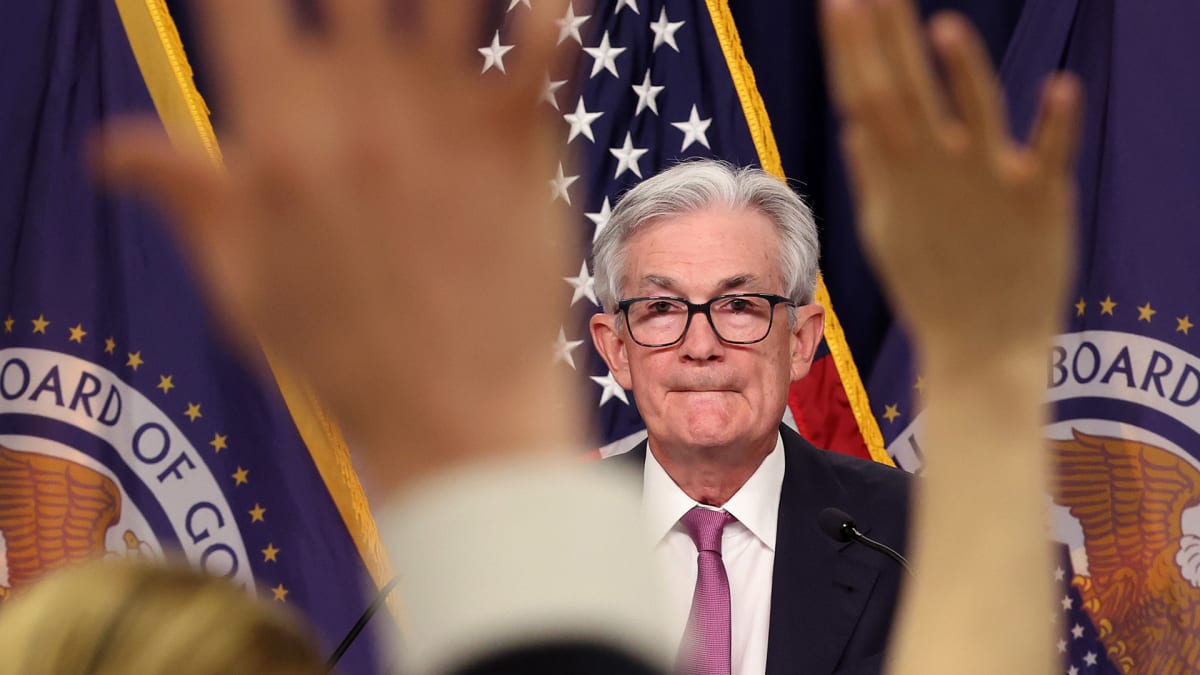
The Federal Reserve will likely leave its key lending rate on hold when it concludes its two-day policy meeting this afternoon, with investors focused on both the new economic projections from Fed officials and commentary from Chairman Jerome Powell as to the central bank's next move.
Yesterday's reading for May inflation, which at 4% was the 11th consecutive monthly decline for the headline consumer price index, was modestly softer than expected.
And it largely cemented the market's assumption that the Fed would skip a rate hike at this meeting as it assesses the impact of its 500 basis points (5 percentage points) of policy tightening on the broader economy.
"We face uncertainty about the lagged effects of our tightening so far, and about the extent of credit tightening from recent banking stresses," Powell said during an economic conference in Washington last month.
"So today, our guidance is limited to identifying the factors we'll be monitoring as we assess the extent to which additional policy firming may be appropriate to return inflation to 2%."
Deeper Support for Bets on a Fed Pause
Bets on a pause in rate hikes, however, received deeper support from comments by Federal Reserve Gov. Philip Jefferson, the vice chairman nominee. He told a conference in Washington that "skipping a rate hike at a coming meeting would allow the committee to see more data before making decisions about the extent of additional policy firming.”
He cautioned, however, that "a decision to hold our policy rate constant at a coming meeting should not be interpreted to mean that we have reached the peak rate for this cycle."
The Fed will release its interest-rate decision at 2:00 p.m. U.S. Eastern, with Powell slated to speak to the media 30 minutes later.
CME Group's FedWatch suggests a 95.3% chance that the Fed will hold the federal funds rate steady at between 5% and 5.25% today. Bets on a July rate hike of 25 basis points are currently pegged at 63.1%.
From the Fed's perspective, however, growth has remained firmly resilient in the face of the most aggressive tightening cycle since the early 1980s. That effort has included 500 basis points in 15 months and billions of dollars in bond sales as the central bank unwinds its still-swollen balance sheet.
The economy added 339,000 new jobs last month, the Labor Department reported last week, taking the year-to-date total past 1.2 million.
Over the month of April, some 10.1 million open positions went unfilled, according to Labor Department figures closely tracked by the Fed. And while wage growth is slowing, the three-month moving average of median hourly earnings is rising at 6%, well ahead of the pace needed to confirm that inflation is heading back to the Fed's 2% target.
"Inflation is still much too high, but the trend is in the right direction and the Fed is ready to take a break from raising interest rates," said Chris Zaccarelli, chief investment officer for the Independent Advisor Alliance in Charlotte.
"The resilience in the economy has been surprising, but higher rates will take their toll on the economy and markets. But in the meantime, both are likely to persist for longer than almost anyone would have expected as recently as six months ago."
New Fed Projections Closely Watched
New projections from the Fed, known as the dot plots, will provide a better understanding as to how the various voting and nonvoting members see the economy evolving over the coming months. That's particularly with respect to core inflation pressures, which remained elevated in yesterday's CPI report from the Commerce Department.
"The macro forecasts likely will be little changed, but we expect the core PCE inflation projection for the end of this year to be increased by 0.3 percentage [point,] to 3.9%," said Ian Shepherdson of Pantheon Macroeconomics.
"That shift, plus the strength of payrolls and the substantial upside surprise to the first-quarter employment costs numbers, will explain the Fed’s willingness to raise rates further."
The broader economic resilience, alongside hopes that the U.S. will avoid recession over the back half of the year, has also reduced expectations that the Fed would cut rates between now and December. Only a few weeks ago the idea that the Fed would pare rates in that period was firmly baked into markets.
CME Group's FedWatch suggests only a 20% chance of a rate cut in December, the Fed's final meeting of 2023, with the balance of bets still pointing to a federal funds rate north of 5% until at least next March.
"There are some probabilities in the [federal funds] futures market for a small additional hike in Q2 and subsequent cut in Q4, but the market expects fed fund futures to end 2023 flat to prevailing rates," said Tom Bonville, managing director and head of derivative sales at Clear Street.
"This is a big change from early May when the market believed the Fed would have to embark on easing monetary policy in Q4 2023."
Get investment guidance from trusted portfolio managers without the management fees. Sign up for Action Alerts PLUS now.







